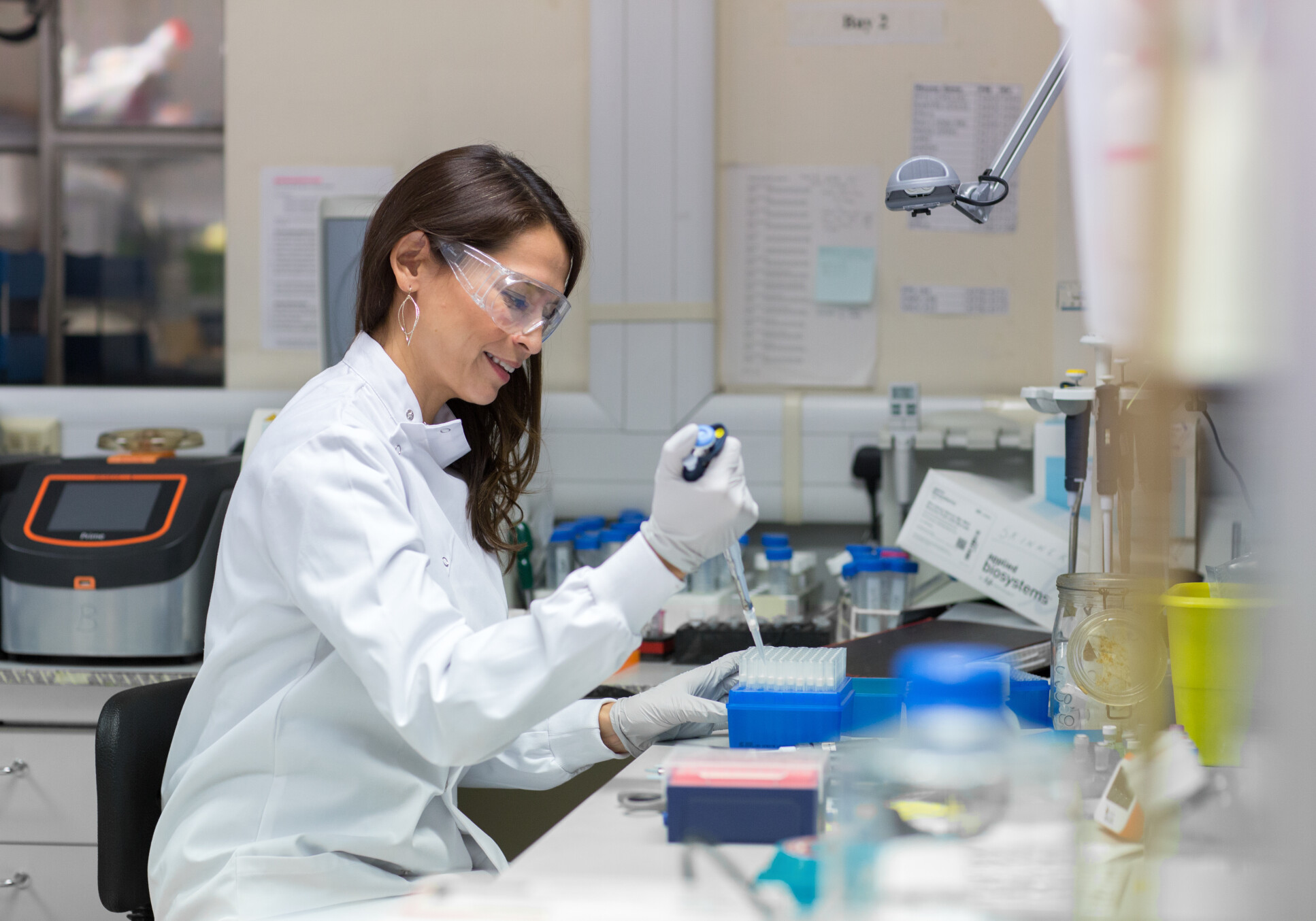Genetic clues explain why children develop rare post-COVID condition
An Imperial-led study has highlighted how rare variants of a gene regulating the gut lining may increase the risk of MIS-C by up to four times.
Scientists have uncovered genetic variants which help to explain why some children with mild COVID-19 go on to develop a severe inflammatory condition weeks after their infection.
Throughout the COVID-19 pandemic, severe SARS-CoV-2 infections in children and infants were rare. But an estimated 1 in 10,000 children went on to develop multisystem inflammatory syndrome in children (MIS-C), presenting with a range of symptoms including rash, swelling and nausea and vomiting.
Now, an international team of researchers led by Imperial College London has identified a gene which may explain why some children were at greater risk of developing this rare condition.
In an analysis including more than 150 cases of MIS-C from Europe and the United States, they found that rare variations of a gene which helps regulate the lining of the gut made children four-times more likely to develop systemic inflammation and an array of symptoms.
According to the researchers, understanding the genetic basis of MIS-C provides new insights into how the condition develops, who is at risk, and how patients and those with related conditions might be better treated.

Senior author Dr Vanessa Sancho-Shimizu, from the Department of Infectious Disease at Imperial College London and The Francis Crick Institute, said: “MIS-C was a very worrying condition for children and their families as well as the clinical teams treating them. Thankfully, the majority of patients recovered, but the underlying mechanisms which drive this condition have been difficult to pin down.
“Working with colleagues around the world, we’ve been able to pinpoint rare genetic variants which we think are likely driving the systemic inflammation we’ve seen, making children more susceptible to MIS-C. We hope these findings will not only enable us to better understand the condition but to improve how we care for children with these types of conditions.”
Genetic analysis
During the COVID-19 pandemic, evidence suggested children were generally at very low risk of severe disease. But reports emerged of a new condition which affected a small proportion of children several weeks after their infection with SARS-CoV-2.
These children generally had mild or no symptoms at the time of their initial infection. But within six weeks they went on to develop a range of symptoms, including abdominal pains and vomiting, fever, rash and more. Clinicians initially reported the symptoms as resembling Kawasaki disease, but it was found to be a new condition call MIS-C .
In the latest analysis, 154 patients aged 0-19 with MIS-C were recruited in Europe and through a research centre in the United States, with blood samples used to sequence patients’ genomes. Researchers then developed a technique to search for genetic variants that might be associated with the condition.
Dr Evangelos Bellos, first author of the paper and a Research Fellow in Imperial’s Department of Infectious Disease, said: “Our new computational technique, which we call burdenMC, gives us the power to identify links between genes and diseases that were previously elusive. It is particularly useful for shedding light on small, diverse groups of patients with rare conditions such as MIS-C.”
Using this approach, the researchers found that small changes in one gene, called BTNL8, were a common factor in children with the condition. Typically, this gene helps to regulate the immune cells in the gut lining, but in patients with MIS-C, rare variants of BTNL8 are believed to have made the gut more sensitive to the SARS-CoV-2 virus and increased inflammation throughout the body, leading to an array of symptoms.
The team worked with the Immunosurveillance Laboratory at the Crick, led by Professor Adrian Hayday, which first identified a function for BTNL8 in the human gut as a regulator of localised T-cells that seemed to contribute to maintaining gut barrier integrity.
Professor Adrian Hayday, Principal Group Leader at the Crick and Professor of Immunobiology at King’s College London, said: “The discoveries implicating BTNL8 were wholly unexpected, and potentially offer entirely new insights into mechanisms that ordinarily prevent virus infections from leading to life-threatening disease.”
Compared with matched healthy controls, patients with rare BTNL8 variants had a four-fold increase in the risk of developing MIS-C symptoms. The analysis also found that children with European and Hispanic ancestry were more likely to have the variants, and so were at greater risk of the condition.
The researchers say they are now working on understanding the exact mechanisms by which these rare variants promote MIS-C. They are also exploring if the gut also plays an important role in the development of other similar childhood inflammatory conditions like Kawasaki disease.
The study was supported by the UKRI-Future leaders fellowship, the European Union’s Horizon 2020 research and innovation programme, Community Jameel, Imperial College COVID19 Excellence Fund, Rosetrees Trust COVID-19 fund and the NIHR Imperial Biomedical Research Centre.
-
‘Heterozygous BTNL8 variants in individuals with multisystem inflammatory syndrome in children (MIS-C)’ by Bellos, E., Santillo, D., Vantourout, P., et al. is published in Journal of Experimental Medicine. DOI: https://doi.org/10.1084/jem.20240699
The NIHR Imperial Biomedical Research Centre (BRC) is a part of the NIHR and hosted by Imperial College Healthcare NHS Trust in partnership with Imperial College London.
Feature image: Shutterstock
Article text (excluding photos or graphics) © Imperial College London.
Photos and graphics subject to third party copyright used with permission or © Imperial College London.